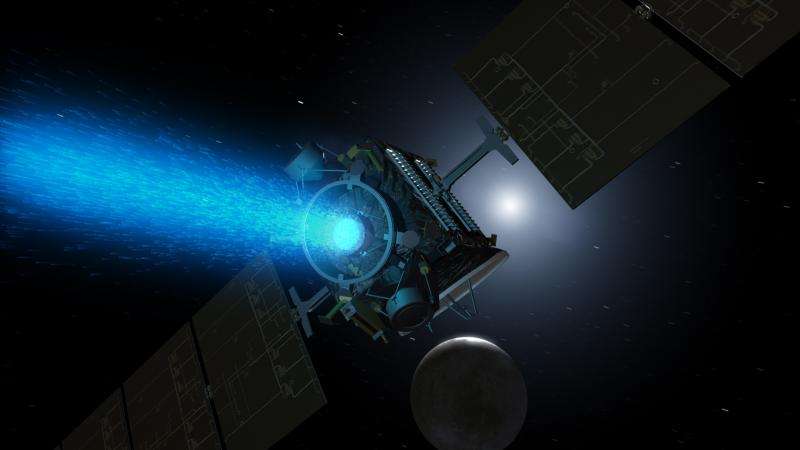Dawn in excellent shape one month after Ceres arrival

Since its capture by the gravity of dwarf planet Ceres on March 6, NASA's Dawn spacecraft has performed flawlessly, continuing to thrust with its ion engine as planned. The thrust, combined with Ceres' gravity, is gradually guiding the spacecraft into a circular orbit around the dwarf planet. All of the spacecraft's systems and instruments are in excellent health.
Dawn has been following its planned trajectory on the dark side of Ceres—the side facing away from the sun—since early March. After it entered orbit, the spacecraft's momentum carried it to a higher altitude, reaching a maximum of 46,800 miles (75,400 kilometers) on March 18. Today, Dawn is about 26,000 miles (42,000 kilometers) above Ceres, descending toward the first planned science orbit, which will be 8,400 miles (13,500 kilometers) above the surface.
The next optical navigation images of Ceres will be taken on April 10 and April 14, and are expected to be available online after initial analysis by the science team. In the first of these, the dwarf planet will appear as a thin crescent, much like the images taken on March 1, but with about 1.5 times higher resolution. The April 14 images will reveal a slightly larger crescent in even greater detail. Once Dawn settles into the first science orbit on April 23, the spacecraft will begin the intensive prime science campaign.
By early May, images will improve our view of the entire surface, including the mysterious bright spots that have captured the imaginations of scientists and space enthusiasts alike. What these reflections of sunlight represent is still unknown, but closer views should help determine their nature. The regions containing the bright spots will likely not be in view for the April 10 images; it is not yet certain whether they will be in view for the April 14 set.
On May 9, Dawn will complete its first Ceres science phase and begin to spiral down to a lower orbit to observe Ceres from a closer vantage point.
Dawn previously explored the giant asteroid Vesta for 14 months, from 2011 to 2012, capturing detailed images and data about that body.
More information: More details about Dawn's trajectory are available at: dawnblog.jpl.nasa.gov
More information about Dawn is online at: dawn.jpl.nasa.gov
Provided by Jet Propulsion Laboratory





















